AEM RASC-AL Senior Design Team Receives First Place
The Department of Aerospace Engineering and Mechanics congratulates the RASC-AL Senior Design team for being very successful at the 2018 RASC-AL Forum held on June 18th to the 21st in Cocoa Beach, Florida. The AEM team received first place in their theme category with their system architecture for a Mars mission propellant resupply capability for the Deep Space Transport.
AEM RASC-AL team members include: Dexter Groath, Garret Kluz-Wisniewski, Qais Al Ismaili, Jack Stutler, Gregory Kosinski, Paul Tischer, Michael Dalhoff, and team lead Sasha Warbritton. The team was advised by: John Weyrauch (Senior Design professor), Chris Regan (AEM Researcher), Suneel Sheikh (ASTER Labs), Chuck Hisamoto (ASTER Labs), and Vaughn Weirens (ASTER Labs).
The competition started in the Fall of 2017 with 60 university teams. After two down- selects, 12 undergraduate teams and 2 graduate teams advanced on to compete in Florida with designs focused on 1 of the 4 future space exploration themes. The AEM team chose the third theme, or the “Propellant Resupply Capability” theme. They titled their research, “Cis-Lunar Electric Transport and Utilization System” or CLETUS.
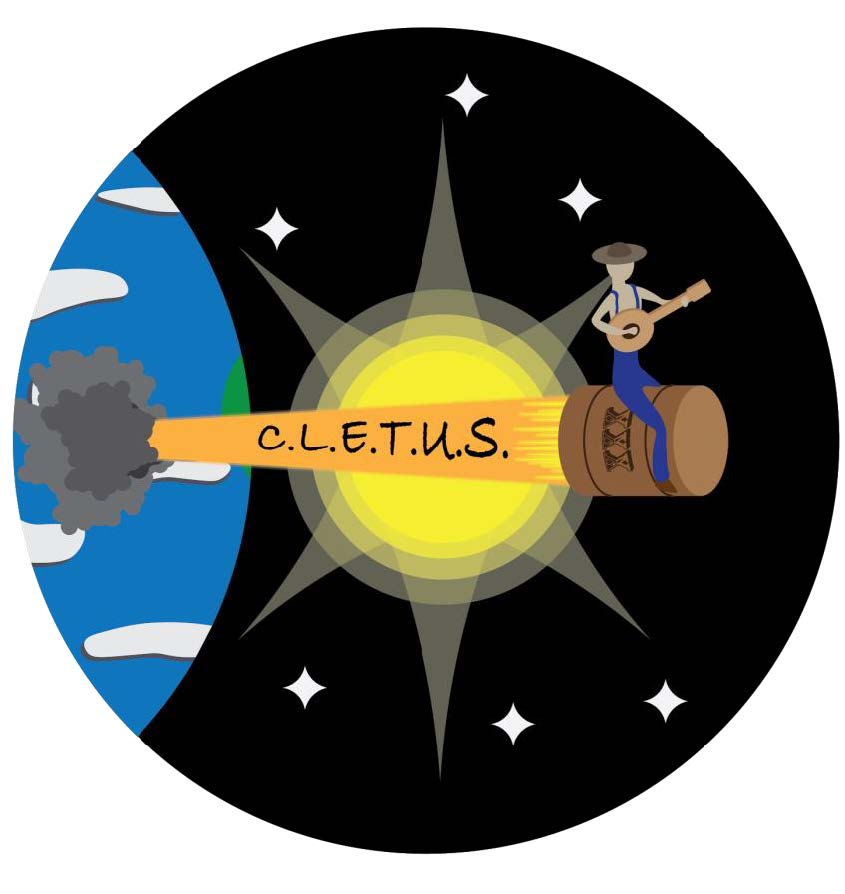
According ot the team's technical paper, "The Cis-Lunar Electric Transfer and Utilization System (CLETUS) is an architecture designed to fulfill this purpose. The Deep Space Transport (DST) is a reusable interplanetary spacecraft that will be assembled in cis-lunar space. It will be a bridge between Earth and the Martian neighborhood, servicing multiple crewed missions to the red planet."
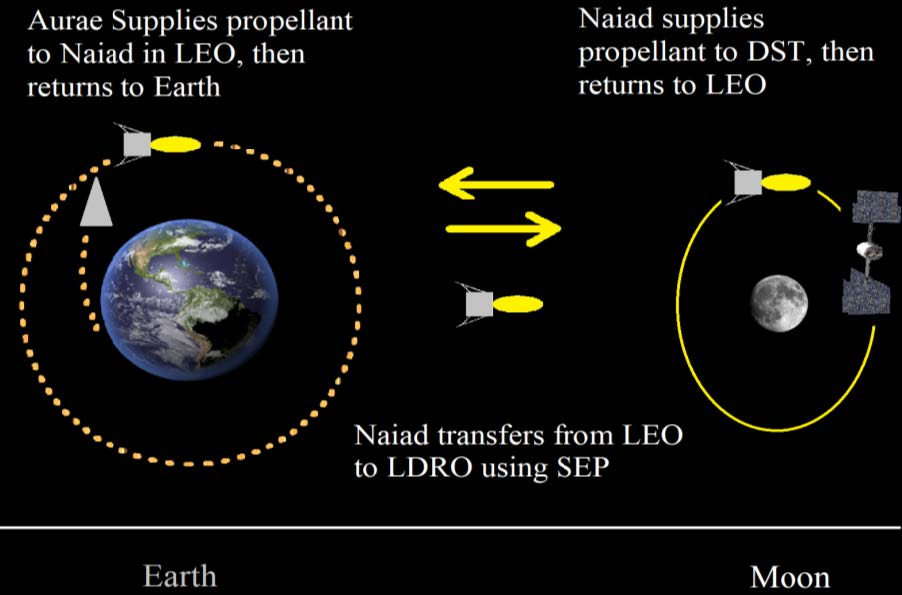
"The multiple components of the CLETUS architecture work together to successfully resupply the Deep Space Transport and Columbia University’s ALMA hybrid propulsion system. The Aurae will ferry propellant from Earth to the Naiad, which will in turn use a low-thrust spiral trajectory to rendezvous with the Boreas tank attached to ALMA and the DST. 36 metric tons of NTO/MMH and 44 tons of liquid argon will be delivered to Boreas each rendezvous. Naiad then returns to Earth orbit to repeat the process so as to resupply the DST every other Mars mission opportunity, or every five years."
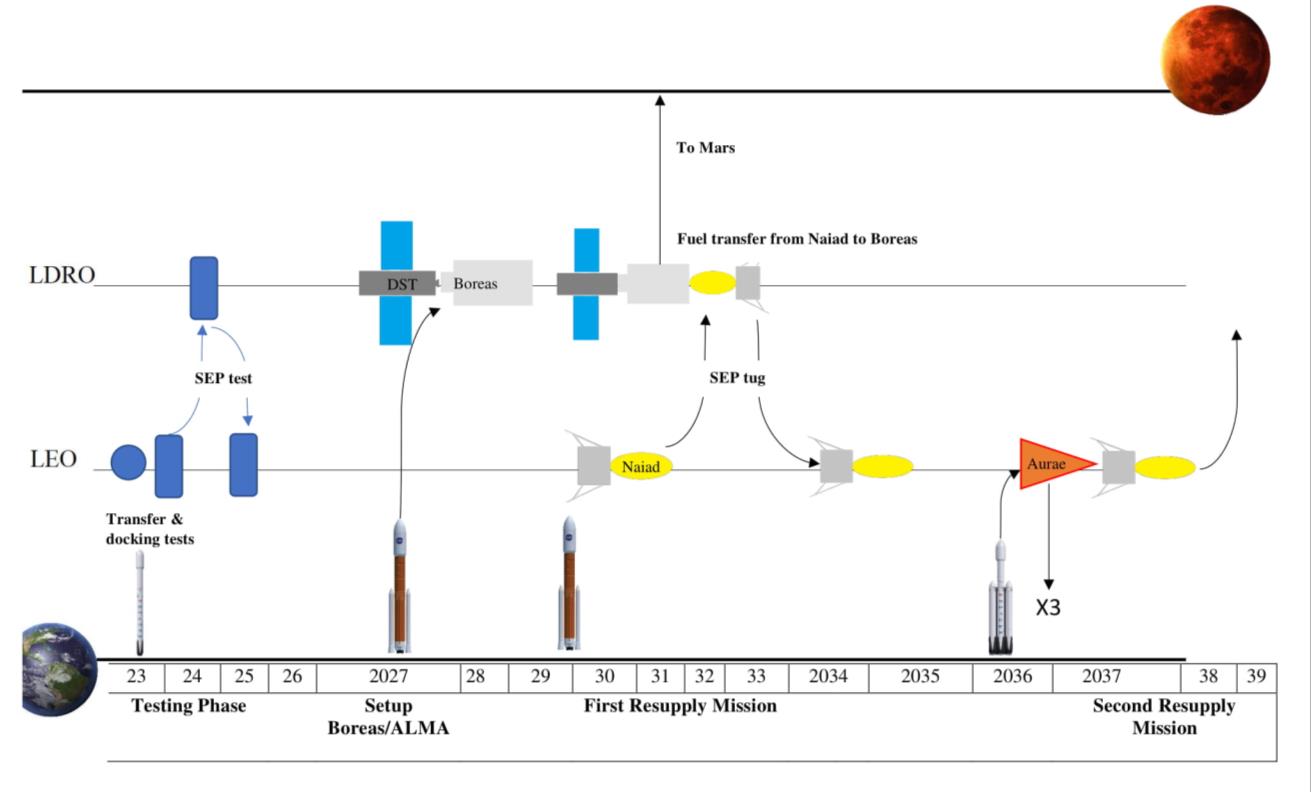
"CLETUS also offers room for growth. By verifying that low-thrust trajectories are possible between the Earth and Moon with large payloads, similar vehicles to Naiad could be developed to supply the Deep Space Gateway or any future lunar operations; even interplanetary missions. Propellant transfer at the scale needed for CLETUS can be applied to other missions and at any scaling. An obvious application of the system would be for propellant depots. At present, a primary risk in the system is if the Aurae missions are delayed, which could mean that the DST cannot be supplied for that opportunity. A depot in LEO, GEO, or in Cis-Lunar space could make Naiad or DST missions independent of Earth launch capabilities (assuming Aurae is delayed). Depots could use the LAD technology for propellant transfer to supply any visiting spacecraft. Aurae spacecraft, or vehicles derived from it, could be used to supply depots and other spacecraft and act as a servicing craft for other missions."
The team
gave an exceptional presentation and provided great answers to the judges’ questions
about their research. Team members thoroughly enjoyed the event; they were inspired by NASA’s future
space exploration vision, and also by a tour of the space hardware and advanced concepts
labs at Kennedy Space Center.
The Department anticipates great things from these aspiring individuals and wishes them the best of luck in the future.
The RASC-AL Forum has uploaded the presentations of the student teams who have presented, and they are available to watch on their livestream website.
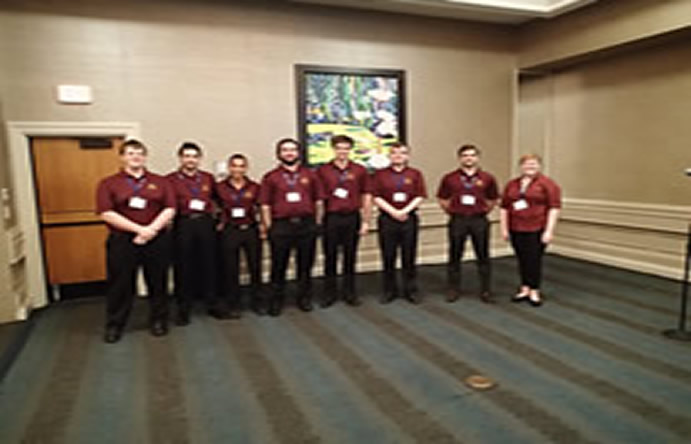
AEM RASC-AL team preparing to make their presentation to the judges.
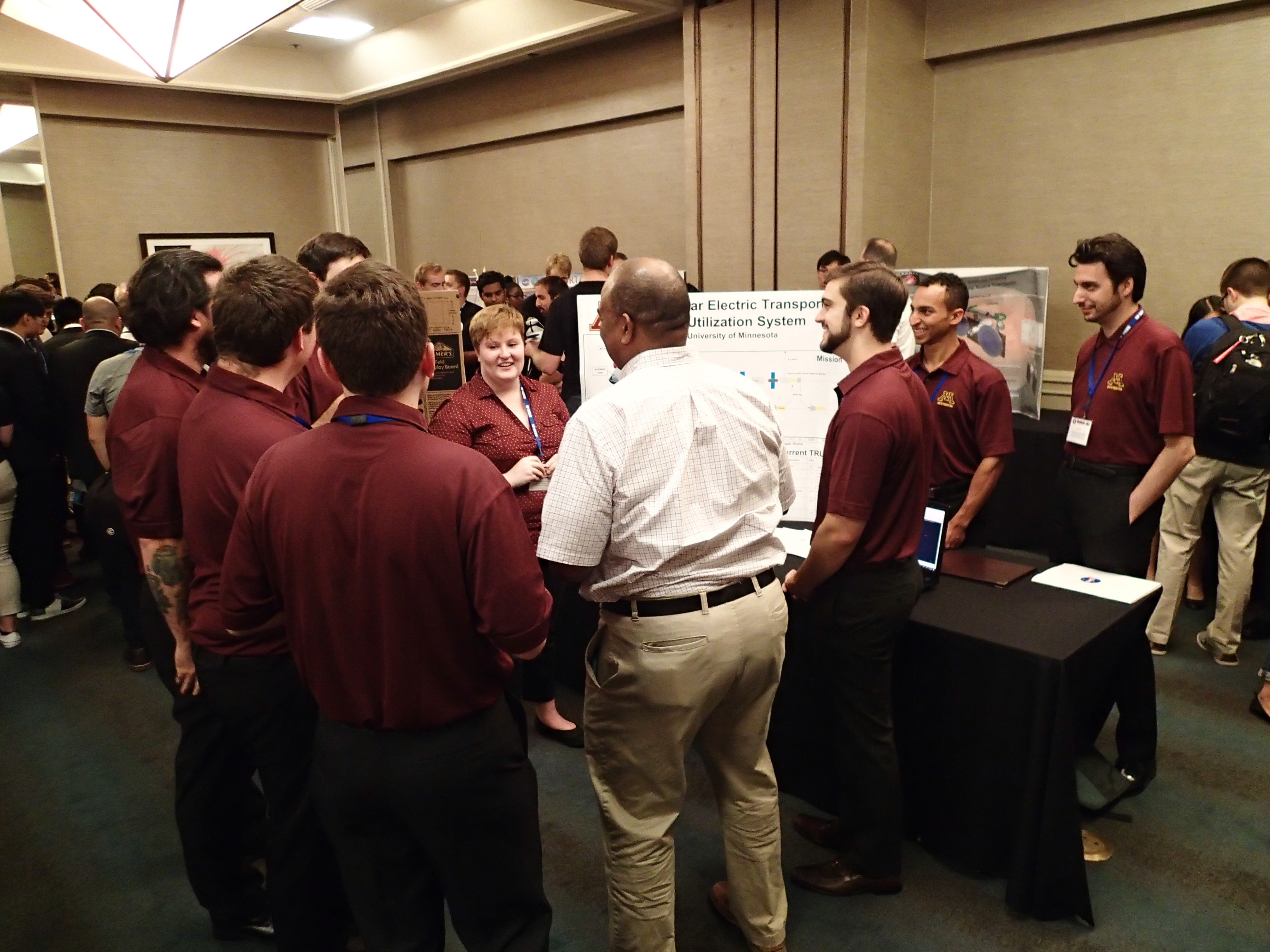
AEM RASC-AL team in their poster session answering questions from RASC-AL Judge and Co-chair Melvin Ferebee of NASA Langley Research Center.


